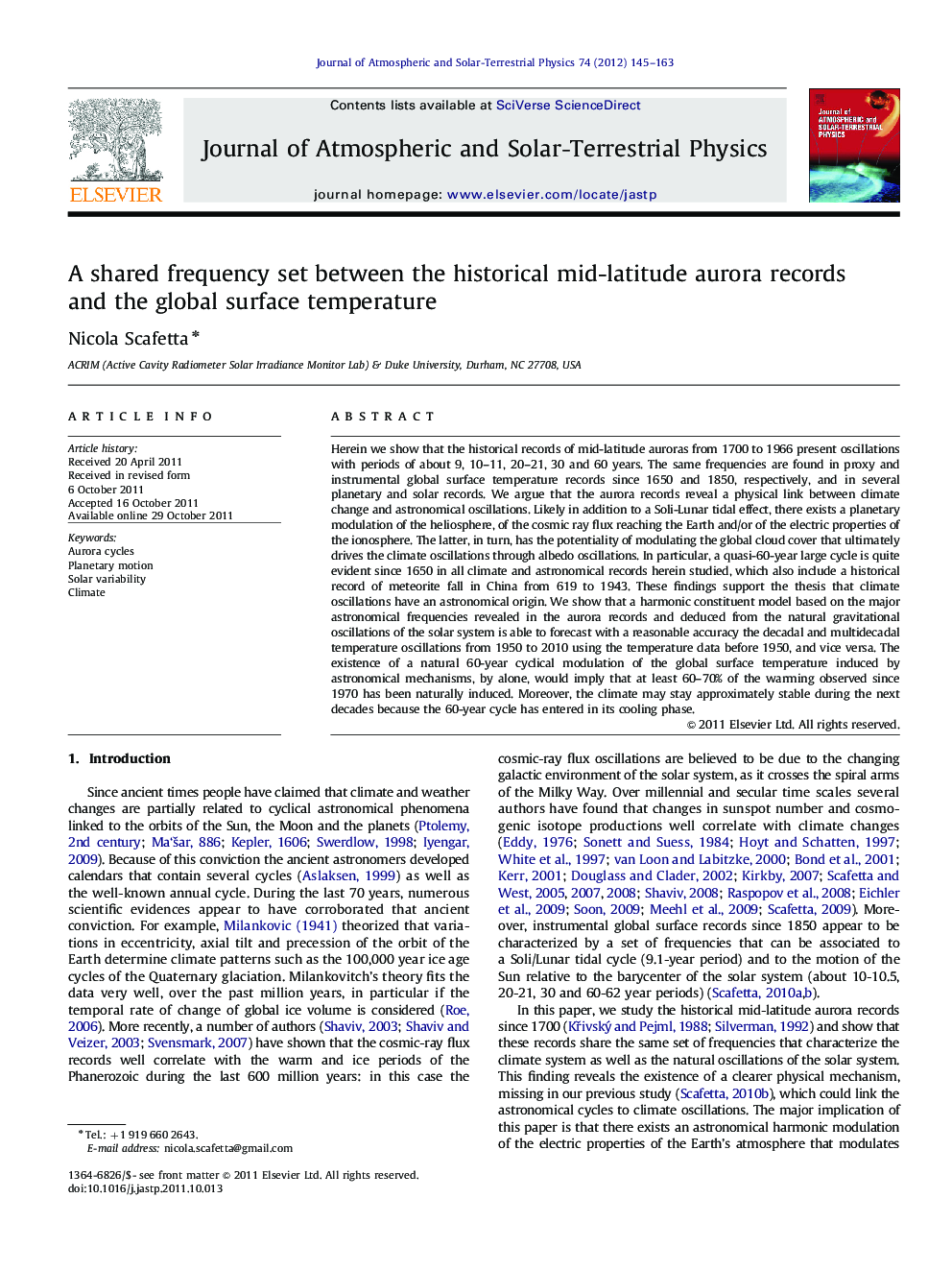| Article ID | Journal | Published Year | Pages | File Type |
|---|---|---|---|---|
| 1777056 | Journal of Atmospheric and Solar-Terrestrial Physics | 2012 | 19 Pages |
Herein we show that the historical records of mid-latitude auroras from 1700 to 1966 present oscillations with periods of about 9, 10–11, 20–21, 30 and 60 years. The same frequencies are found in proxy and instrumental global surface temperature records since 1650 and 1850, respectively, and in several planetary and solar records. We argue that the aurora records reveal a physical link between climate change and astronomical oscillations. Likely in addition to a Soli-Lunar tidal effect, there exists a planetary modulation of the heliosphere, of the cosmic ray flux reaching the Earth and/or of the electric properties of the ionosphere. The latter, in turn, has the potentiality of modulating the global cloud cover that ultimately drives the climate oscillations through albedo oscillations. In particular, a quasi-60-year large cycle is quite evident since 1650 in all climate and astronomical records herein studied, which also include a historical record of meteorite fall in China from 619 to 1943. These findings support the thesis that climate oscillations have an astronomical origin. We show that a harmonic constituent model based on the major astronomical frequencies revealed in the aurora records and deduced from the natural gravitational oscillations of the solar system is able to forecast with a reasonable accuracy the decadal and multidecadal temperature oscillations from 1950 to 2010 using the temperature data before 1950, and vice versa. The existence of a natural 60-year cyclical modulation of the global surface temperature induced by astronomical mechanisms, by alone, would imply that at least 60–70% of the warming observed since 1970 has been naturally induced. Moreover, the climate may stay approximately stable during the next decades because the 60-year cycle has entered in its cooling phase.
► The paper highlights that global climate and aurora records present a common set of frequencies. ► These frequencies can be used to reconstruct climate oscillations within the time scale of 9–100 years. ► An empirical model based on these cycles can reconstruct and forecast climate oscillations. ► Cyclical astronomical physical phenomena regulate climate change through the electrification of the upper atmosphere. ► Climate cycles have an astronomical origin and are regulated by cloud cover oscillations.
